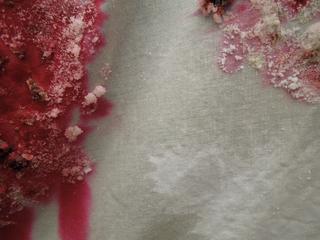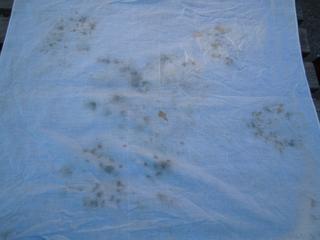Dyeing with Natural Materials
*A project gone wrong… But there are other resources at the end!*
Supplies at the ready.
materials
Berries
Detergent
Iron (optional)
Mallet
Salt
White Cloth
methods
I purchased and washed white bandanas.
We're experimenting with ways to get natural dyes to stay in fabric and to make patterns with the dyes.
The white bandana is placed on a relatively smooth tree round, as I'm curious to see if the pattern can be printed on the wood as well. Fresh black currants from the garden are placed in a heart pattern. Rocks hold the bandana corners down to prevent blowing in the breeze.
A generous layer of salt is added to the currants to act as a mordant to enable the dye to stain the fabric more permanently.
A second white bandana is placed on top of the first, the berries, and the salt. It's gently tapped with the mallet and another layer of salt is added and left to dry.
Reckoning a need to allow the project to dry away from children, sunlight, and rats, I placed one cloth on a cabinet shelf and the other hanging on the inside. Unexpectedly, the currants dripped their juices and the salt continued to attract moisture from the environment.
After a week of curing with currants and salt attached, here are the bandanas after rinsing with a hose. Huge color change from red to purple. The bandana in the foreground is the one that had been hung, resulting in the colors running.
After washing and drying with a normal load of clothes, the color looks very washed out in the sunshine.
In the shade, the patterns are still present.
Close-up of the colors, which are now mostly purple and brown.
Note:
I tried the above experiment after doing this with my mom at school and not having great results after we worked with the kids tie-dyeing clothes, bandanas, and flour sacks in mixtures of salt with either blueberries, strawberries, or blackberries and left overnight. Here's the note we wrote to the parents to prepare them for what we'd do with their kids the day my mom visited.
Good luck with all this... I know there's a great formula that'll actually work out there somewhere!
“How to Make Homemade Natural Easter Egg Dyes With the Food in Your Kitchen,” by Amanda Garrity, Good Housekeeping
Although this article focuses on easter eggs, it has great tips for making simple dyes with common foods:
Here’s a resource from the U.S. Forest Service, “Native Plant Dyes”:
Don’t forget the fungi! Here’s a facebook group, “Mushroom and Lichen Dyers United:”
I'm always a fan of butterfly bush because it attracts all sorts of butterflies, including monarchs. It smells fantastic and its purple flowers make a beautiful orange (!) dye. When growing this plant, it's just important to keep it trimmed back (cut back selectively in January-ish), as it'll grow HUGE!
Also see some of my notes on color here:
Lesson plan by Heather Taylor and Camille Wood, teachoutside@gmail.com. You are welcome to share all materials with credit to them.











